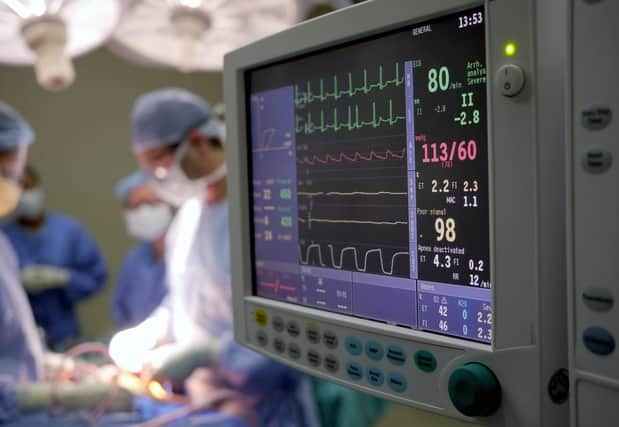Patches made with human cells repair heart attack damage


A patch made from human cells repairs the damage caused by a heart attack, a study found.
In experiments, the patches boosted the recovery of pigs, the first time such a heart muscle device has been tried on large animals.
Advertisement
Hide AdAdvertisement
Hide AdThe breakthrough brings the stitching of patches over dead heart muscle to prevent heart failure a major step closer.
Scientists say the key to their success is the remarkable way the patches are engineered.
To prepare the large human cardiac-muscle patches for transplantation to damaged hearts, they were grown on a rocking machine for seven days.
By that time, the patches were contracting spontaneously and in synchrony - just like the real thing.
Advertisement
Hide AdAdvertisement
Hide AdMeasuring about an inch wide, and just over a millimetre thick, it encouraged the growth of healthy cells in diseased pigs and led to less scarring.
This can be common after a heart attack, making the organ pump less effectively and sometimes fail.
Revolutionary treatment
Professor Jianyi Zhang, the chair of University of Alabama at Birmingham Biomedical Engineering, hopes his patch may revolutionise treatment.
There are close to 200,000 heart attack hospital admissions in the UK every year
Advertisement
Hide AdAdvertisement
Hide AdDuring an attack, muscle cells in the heart die because of a lack of blood flow and repairing or replacing some may help reduce long term damage.
The study published in Circulation found transplanting two of the patches onto the damaged tissue of a pig heart significantly improved function of the left ventricle, the major pumping chamber.
They also greatly reduced the area of dead muscle, stress on the heart wall and enlargement of the organ.
This was as well as dramatically decreasing programmed cell death, a process known as apoptosis, in the scar border around the dead heart muscle.
Repetitive beats
Advertisement
Hide AdAdvertisement
Hide AdFurthermore, the patches did not cause an irregular beat, or arrhythmia in the hearts - a serious complication observed in some past similar approaches to treating heart attacks.
The patches include four million heart muscle cells called cardiomyocytes, two million endothelial cells which help them survive and function in a micro-environment and two million smooth muscle cells which line blood vessels.
They were created from human induced pluripotent stem cells (hiPSCs), mature cells which act like embryonic ones by being able to become any tissue in the human body.
Using the three types of cells was vital, said the team.
Each patch was grown in a 3D fibrin matrix, a network of protein that can support living tissues, that was rocked back and forth for a week. The cells began to beat in synchrony after just a day.
Advertisement
Hide AdAdvertisement
Hide AdThe cocktail of cells and the dynamic motion produced more heart muscle cells that were also more mature, with superior function and force, compared with patches made with cells that are not rocked..
Past attempts to use IPS cells to treat animal models of heart attacks - using an injection or grown as a very thin film - have shown very low rates of survival.
Four weeks after transplantation one in nine of the patches had grown and begun to make healthy new cells, a relatively high rate. This led to improved heart recovery.
Part of the benefit may occur through the release of chemicals called exosomes from cells in the patches. These carry proteins and bits of DNA from one cell to another.
Cell survivors
Advertisement
Hide AdAdvertisement
Hide AdIn tests, the researchers found the exosomes appeared to protect the survival of the cells, and improved the heart's contraction.
Prof Zhang explained: "We generated human cardiac muscle patches of clinically relevant dimensions by suspending cardiomyocytes, smooth-muscle cells, and endothelial cells that had been differentiated from hiPSCs in a fibrin scaffold and then culturing the construct on a dynamic, rocking, platform.
"Assessments were conducted in a pig model of heart attack. Cardiac function and tissue damage size were evaluated by magnetic resonance imaging.
"The patches began to beat synchronously within one day of fabrication, and after seven days of rocking, assessments indicated the mechanisms related to the improvements."
Advertisement
Hide AdAdvertisement
Hide AdHe added: "We have fabricated a clinically relevant size of heart patch with cardiac cells derived from hiPSCs.
"Transplantation results in significantly reduced tissue damage size and improvements in cardiac function that are associated with reduction in left ventricle wall stress.
"The treatment is not associated with significant changes in heart rhythm."